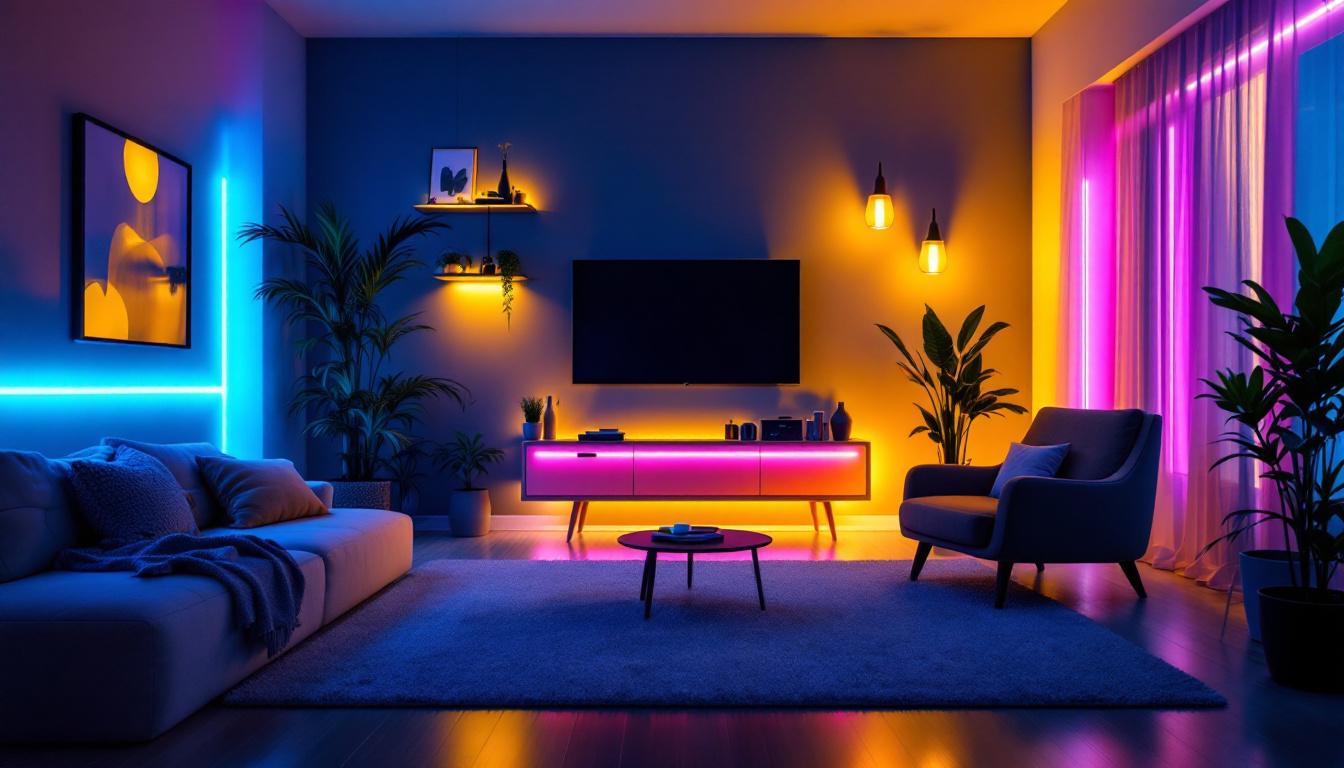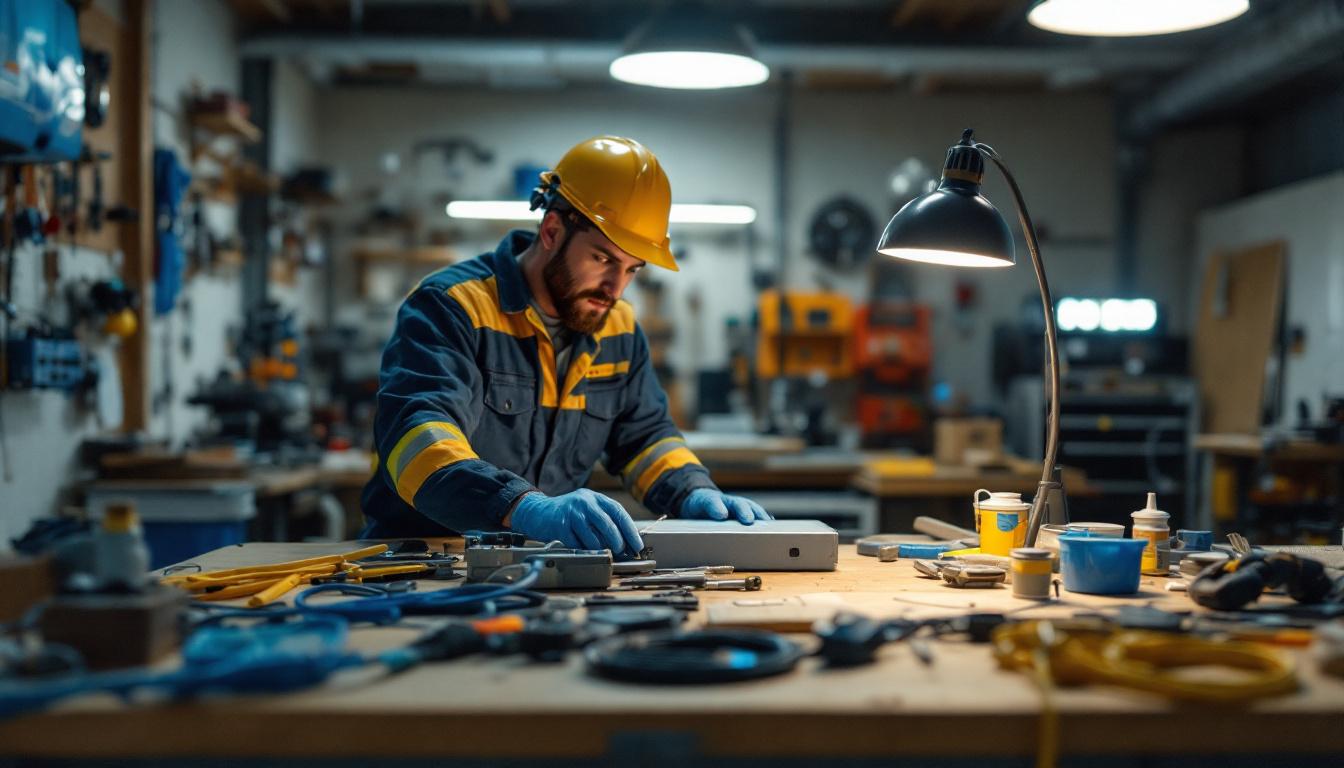
LED (Light Emitting Diode) technology has revolutionized the lighting industry, offering a more energy-efficient alternative to traditional incandescent and fluorescent bulbs. For lighting contractors, understanding the fundamentals of LED technology is crucial, as it directly impacts project costs and customer satisfaction.
LED bulbs operate by passing an electric current through a semiconductor, which emits light. This process is significantly more efficient than traditional lighting methods, which waste a large portion of energy as heat. As a result, LEDs consume less power and have a longer lifespan, making them an attractive option for both contractors and their clients.
One of the primary advantages of LED bulbs is their energy efficiency. Compared to incandescent bulbs, which convert only about 10% of energy into light, LEDs can convert up to 90% of energy into usable light. This efficiency translates to lower electricity bills for clients, which is a compelling selling point for contractors.
Moreover, the reduced energy consumption not only benefits the end-users but also contributes to a reduced carbon footprint, aligning with the growing demand for sustainable practices in the construction and renovation industries. By promoting energy-efficient solutions, contractors can enhance their reputation and appeal to environmentally conscious clients. Furthermore, many local governments and organizations offer incentives and rebates for projects that utilize LED technology, providing contractors with additional opportunities to save costs and attract clients looking for eco-friendly options.
LED bulbs boast an impressive lifespan, often lasting up to 25,000 hours or more, compared to the 1,000 hours typical of incandescent bulbs. This longevity means fewer replacements and less maintenance for clients, ultimately leading to cost savings. For lighting contractors, this translates to fewer service calls and a more streamlined workflow.
Additionally, LEDs are more durable than traditional bulbs. They are resistant to shock, vibrations, and extreme temperatures, making them suitable for a variety of applications, from residential to commercial settings. This durability can be a significant selling point for contractors looking to provide reliable lighting solutions. Beyond their physical resilience, LED technology also allows for innovative designs and applications, such as flexible LED strips and smart lighting systems that can be controlled remotely. These advancements not only enhance the aesthetic appeal of spaces but also provide clients with customizable lighting solutions that can adapt to their needs, further solidifying the contractor’s role as a knowledgeable and versatile partner in their projects.
Switching to LED technology can lead to substantial cost savings for lighting contractors. These savings can manifest in various ways, from reduced energy bills for clients to lower operational costs for contractors themselves. Understanding these financial benefits is essential for contractors aiming to maximize profitability while delivering value to their customers.
As previously mentioned, LED bulbs consume significantly less energy than traditional lighting options. This reduction in energy consumption leads to lower utility bills for clients, making LED installations an attractive proposition. For contractors, this can also mean fewer complaints about high energy costs, leading to increased customer satisfaction and repeat business.
Furthermore, many utility companies offer rebates or incentives for clients who switch to energy-efficient lighting solutions. Contractors can leverage these programs to provide additional value to their clients, making the transition to LED lighting even more appealing. By guiding clients through the rebate process, contractors not only enhance their service offerings but also build trust and rapport, which can lead to long-term relationships and a steady stream of referrals.
The long lifespan of LED bulbs means that clients will spend less on replacements and maintenance. For contractors, this translates to fewer service calls and less time spent on maintenance tasks. By reducing the frequency of bulb replacements, contractors can focus on new projects and expand their business opportunities.
Moreover, the durability of LED technology means that contractors can confidently recommend these products, knowing that they will perform reliably over time. This reliability can enhance a contractor’s reputation, leading to more referrals and increased business growth. Additionally, the reduced need for maintenance can free up resources, allowing contractors to invest in training or new technologies that can further improve their service offerings. As the industry continues to evolve, staying ahead with the latest advancements in lighting technology can position contractors as leaders in their field, attracting more clients who are eager for innovative solutions.
Incorporating LED lighting into projects not only reduces costs but also enhances the overall value of the work performed. Clients are increasingly looking for modern, energy-efficient solutions that align with contemporary design trends. By offering LED lighting options, contractors can differentiate themselves in a competitive market.
LED technology offers unparalleled design flexibility. Available in various shapes, sizes, and color temperatures, LEDs can be integrated into virtually any design scheme. Whether it’s a sleek modern aesthetic or a warm, traditional ambiance, LED lighting can meet the diverse needs of clients.
Additionally, advancements in LED technology have led to the development of smart lighting solutions that can be controlled remotely or programmed for specific settings. This feature not only enhances the user experience but also allows contractors to offer cutting-edge solutions that appeal to tech-savvy clients. The integration of smart home systems with LED lighting can create an interactive environment where users can adjust lighting based on their mood or activity, such as dimming lights for a movie night or brightening them for a lively gathering.
Lighting plays a crucial role in the overall aesthetics of a space. LED bulbs provide a high-quality light output that enhances colors and textures, making spaces look more inviting and vibrant. For contractors, this means that projects featuring LED lighting are more likely to impress clients and meet their expectations.
Moreover, the ability to customize color temperatures and brightness levels allows contractors to create tailored lighting solutions that enhance the functionality and beauty of a space. This level of customization can set a contractor apart from competitors who may not offer such personalized service. For instance, in commercial spaces, the use of adjustable LED lighting can significantly influence customer behavior, encouraging longer visits and increased sales. In residential settings, warm LED lighting can create a cozy atmosphere, perfect for family gatherings or quiet evenings at home, thus enhancing the overall living experience.
For lighting contractors, effectively marketing LED solutions is essential to capitalize on the growing demand for energy-efficient lighting. Understanding how to communicate the benefits of LED technology can help contractors attract new clients and retain existing ones.
Many clients may not fully understand the advantages of LED lighting. Contractors have the opportunity to educate clients about the long-term cost savings, environmental benefits, and aesthetic improvements associated with LED technology. Providing clear, concise information can help clients make informed decisions and feel confident in their choices.
Workshops, informational brochures, and online resources can be effective tools for educating clients. By positioning themselves as knowledgeable experts in LED technology, contractors can build trust and credibility with potential customers.
Highlighting successful projects that utilized LED lighting can serve as powerful marketing tools. Case studies, testimonials, and before-and-after photos can effectively demonstrate the benefits of LED solutions. By showcasing real-world examples, contractors can illustrate the value of their services and the positive impact of LED technology on various projects.
Social media platforms and websites are excellent venues for sharing these success stories. Engaging content can attract attention and encourage potential clients to reach out for more information.
While the benefits of LED lighting are substantial, there are also challenges and considerations that lighting contractors must address. Being aware of these factors can help contractors navigate potential obstacles and provide the best solutions for their clients.
One of the primary challenges associated with LED lighting is the initial cost. Although LED bulbs tend to be more expensive than traditional options, the long-term savings often outweigh the upfront investment. Contractors must be prepared to explain this to clients, emphasizing the total cost of ownership rather than just the initial purchase price.
Offering financing options or highlighting available rebates can also help mitigate concerns about upfront costs. By presenting a clear financial analysis, contractors can demonstrate the value of investing in LED technology.
Another consideration is compatibility with existing fixtures and systems. Not all LED bulbs are designed to work with every type of fixture, and some may require additional components, such as drivers or dimmers. Contractors must be knowledgeable about these compatibility issues to ensure smooth installations and avoid potential problems.
Staying informed about the latest advancements in LED technology and product offerings can help contractors make informed decisions and provide the best solutions for their clients. This knowledge can also enhance a contractor’s reputation as a reliable expert in the field.
Incorporating LED lighting solutions can significantly reduce costs for lighting contractors while providing numerous benefits for clients. From energy efficiency and lower maintenance costs to enhanced aesthetics and design flexibility, the advantages of LED technology are compelling.
By effectively marketing these solutions and educating clients about the long-term benefits, contractors can position themselves as leaders in the industry. While challenges exist, being proactive and informed can help contractors navigate potential obstacles and deliver exceptional value to their clients.
Ultimately, embracing LED technology is not just a trend; it is a strategic decision that can lead to sustainable growth and success in the competitive lighting market.
Ready to harness the cost-saving power of LED bulbs for your lighting projects? At LumenWholesale, we provide lighting contractors with the highest quality, spec-grade LED lighting products at unbeatable wholesale prices. Say goodbye to local distributor markups and hello to superior lighting solutions that meet the highest industry standards. With our hassle-free bulk buying and free shipping, you can equip your projects with premium lighting at the best value — all without hidden fees or compromises. Elevate your lighting game and give your clients the efficiency and aesthetics they deserve. Discover wholesale lighting at the best value today and make a strategic choice for sustainable success with LumenWholesale.

Explore the transformative impact of LED strip lights in contemporary lighting solutions.

Discover how the innovative washer power plug is revolutionizing the workflow for lighting contractors.

Discover the advantages of Type C light bulbs for lighting contractors, from energy efficiency to enhanced durability.

Discover effective strategies for lighting contractors to tackle common challenges in high bay LED installations.